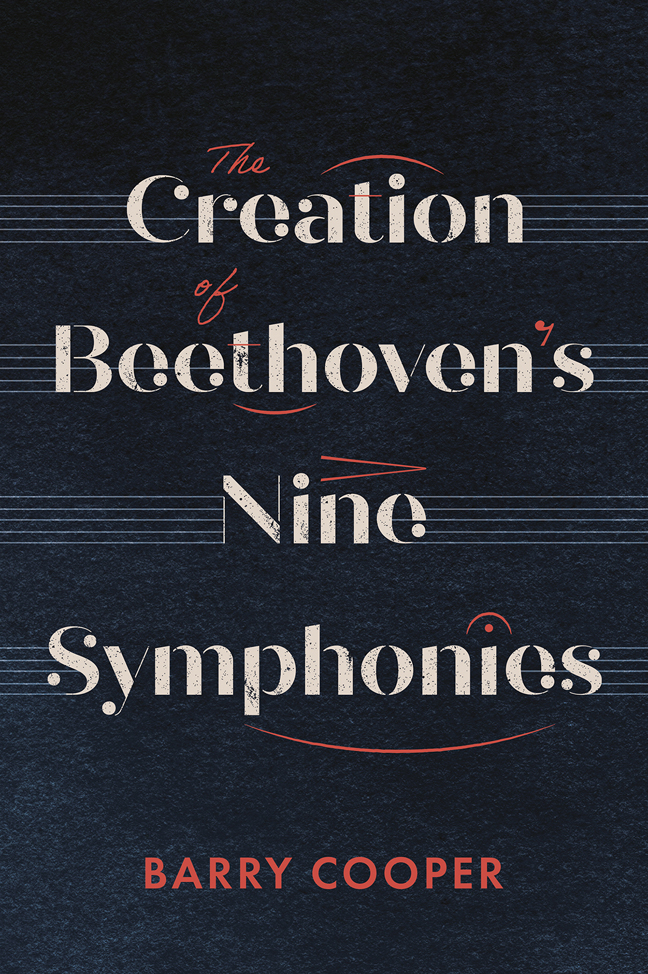Book contents
- Frontmatter
- Contents
- List of music examples
- List of tables and figures
- Preface and acknowledgements
- Abbreviations
- Introduction
- 1 The Long and Hazardous Road to the First Symphony, Op. 21
- 2 A Creation in Two Parts: The Second Symphony, Op. 36
- 3 Elevating the Genre: The Third Symphony (Eroica), Op. 55
- 4 The Oppersdorff Connection: The Fourth Symphony, Op. 60
- 5 Motivic Intensity: The Fifth Symphony, Op. 67
- 6 ‘More an Expression of Feeling than Painting’: The Sixth Symphony (Pastoral), Op. 68
- 7 ‘Great, Exalted’ Work: The Seventh Symphony, Op. 92
- 8 ‘Just Because it is Much Better’: The Eighth Symphony, Op. 93
- 9 The Philharmonic Connection: The Ninth Symphony, Op. 125
- 10 Epilogue
- Bibliography
- Index of Music Manuscripts
- Index of Beethoven’s Works
- General Index
3 - Elevating the Genre: The Third Symphony (Eroica), Op. 55
Published online by Cambridge University Press: 02 March 2024
- Frontmatter
- Contents
- List of music examples
- List of tables and figures
- Preface and acknowledgements
- Abbreviations
- Introduction
- 1 The Long and Hazardous Road to the First Symphony, Op. 21
- 2 A Creation in Two Parts: The Second Symphony, Op. 36
- 3 Elevating the Genre: The Third Symphony (Eroica), Op. 55
- 4 The Oppersdorff Connection: The Fourth Symphony, Op. 60
- 5 Motivic Intensity: The Fifth Symphony, Op. 67
- 6 ‘More an Expression of Feeling than Painting’: The Sixth Symphony (Pastoral), Op. 68
- 7 ‘Great, Exalted’ Work: The Seventh Symphony, Op. 92
- 8 ‘Just Because it is Much Better’: The Eighth Symphony, Op. 93
- 9 The Philharmonic Connection: The Ninth Symphony, Op. 125
- 10 Epilogue
- Bibliography
- Index of Music Manuscripts
- Index of Beethoven’s Works
- General Index
Summary
Allegro con brio
Marcia funebre: Adagio assai
Scherzo: Allegro vivace
Finale: Allegro molto – Poco andante – Presto
Disputed origins
Beethoven’s Symphony No. 3 is such a pivotal work, with such a large number of surviving sketches, that it has been the subject of numerous studies, and there are no doubt many more to come. The present account attempts merely to provide an overview of its evolution from conception to publication. There are conflicting accounts of how it originated. According to the ever-inventive Anton Schindler, it was Napoleon’s General Jean Bernadotte (later King Karl XIV of Sweden) who suggested to Beethoven that he compose a work in honour of Napoleon, and Beethoven responded with the Eroica Symphony. Unfortunately the only time when Bernadotte could have met Beethoven was when the general was in Vienna in early 1798, at a time when Beethoven had not written his First Symphony and was clearly not contem-plating his Third. Moreover, at that time Napoleon was not the pre-eminent ruler of France that he had become by the time Beethoven was writing his Second Symphony, and was therefore unlikely to be suggested as the subject for a symphony.
Carl Czerny gives a quite different account. He states that, according to Beethoven’s friend Joseph von Bertolini (1784–1861), ‘the death of the English General Abercrombie gave Beethoven the initial idea of the Eroica Symphony’. Ralph Abercromby (1734–1801), who was Scottish (Czerny used ‘English’ in the sense of English-speaking), died as a result of a wound at the Battle of Alexandria. But this too was well before the Second Symphony had been completed or the Third contemplated, and so Bertolini’s claim seems unlikely, especially as he probably did not know Beethoven at the time. Czerny also claims that the original version of the opening theme was as it appears near the end of the movement, with no dramatic descent to C♯. This claim is not supported by Beethoven’s sketches.
The sketch record is both more prosaic and more dramatic. Beethoven’s Wielhorsky Sketchbook, begun in summer 1802, shows sketches for the Piano Sonata Op. 31 No. 3 followed by some for two sets of piano variations – Op. 34 in F major and Op. 35 on a theme from the finale of his ballet Die Geschöpfe des Prometheus – up to page 43.
- Type
- Chapter
- Information
- The Creation of Beethoven's Nine Symphonies , pp. 61 - 93Publisher: Boydell & BrewerPrint publication year: 2024

